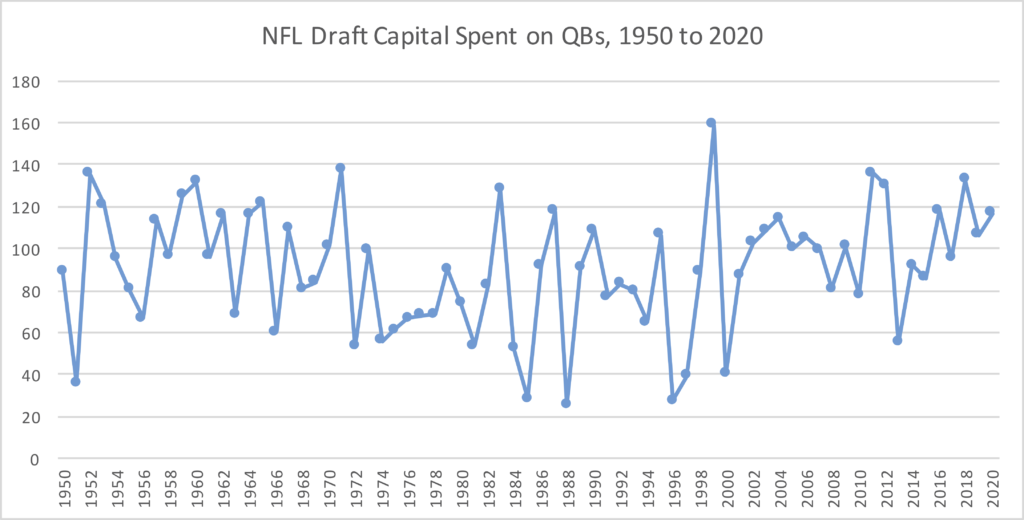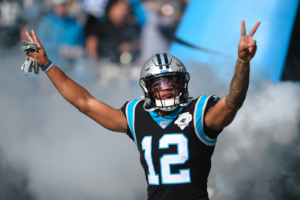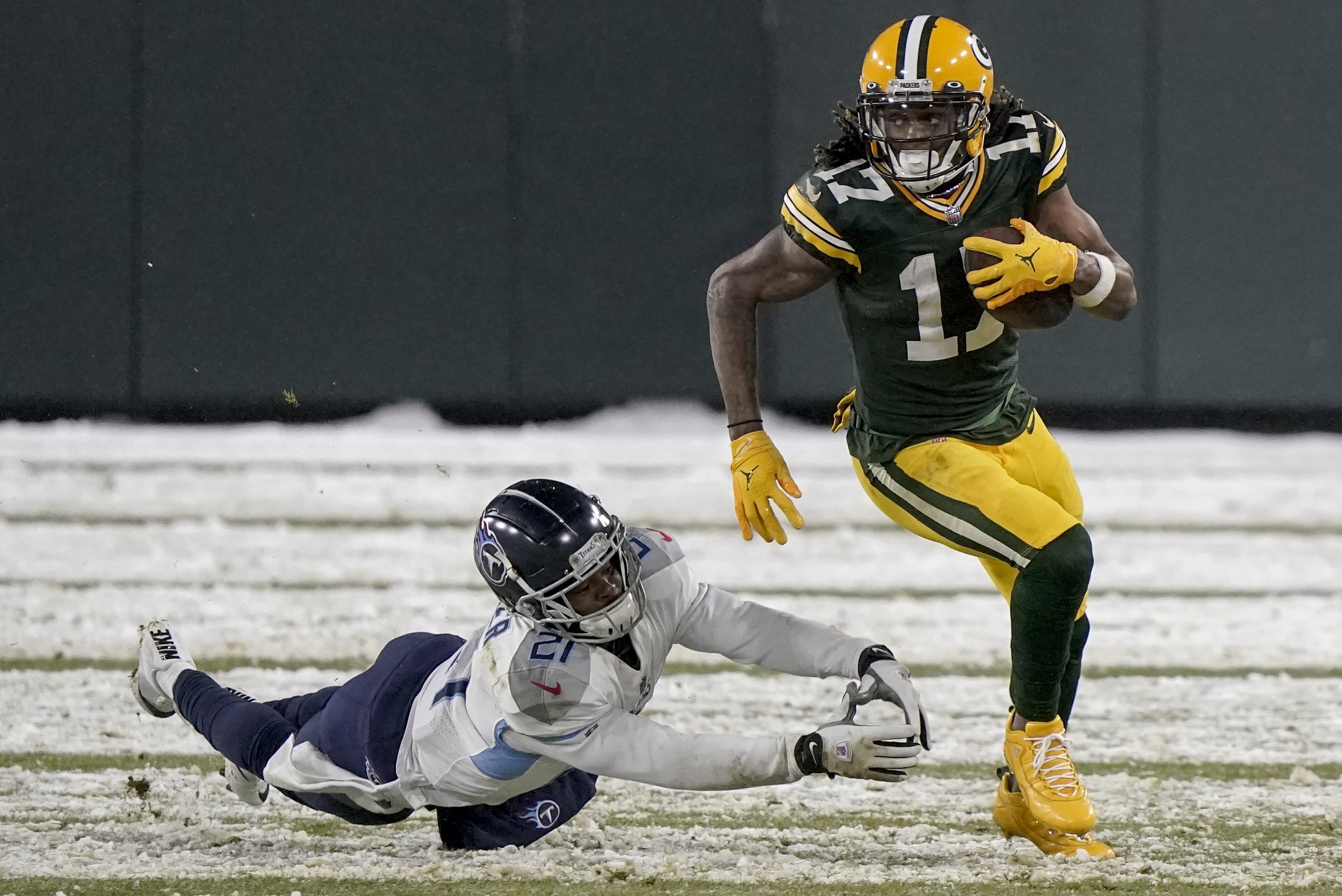After about 215000 words and nearly 400 pages, the Grand List is finally over. [1]That’s 391 pages in Times New Roman, 12 font in Word. The list also contained at least six trillion typos, but hopefully no factual inaccuracies. Before I get to updating the list to include the 2020 season, I want to consolidate some of the information from the project.
By design, there were five special teamers and six return men on the team. After that, I went with the players I felt were the best, irrespective of position. Without separating premodern from modern players, and counting two way players by their offensive positions, here is a positional breakdown of the list:
- 90 quarterbacks
- 118 running backs
- 10 blocking fullbacks
- 122 wide receivers or ends
- 41 tight ends
- 77 offensive tackles
- 72 offensive guards
- 44 offensive centers
- 75 defensive ends
- 83 defensive tackles
- 111 linebackers
- 65 cornerbacks
- 62 safeties
- 10 kickers
- 9 punters
Given the number of players at each position that occupy the field at the same time, which has fluctuated as the league has evolved, I don’t think the numbers are too far off from whatever the ideal is. The relative lack of defensive players is explained by the fact that the premodern players played on both side of the ball. So when I count Baugh as a quarterback, I am ignoring his work at safety to avoid double counting, though he obviously played on defense for much of his career. In theory, there should be about the same number of tackles and guards, and that number should be about twice as high as centers. However, it looks like centers are a little high, so I may have been too generous there, or not generous enough with guards and tackles. When looking at the older players, I remember having the impression that, for one reason or another, centers tended to be better on defense. That may explain some of the high number. I think I am a little low on defensive backs, and I will try to further examine my own thoughts on that as I continue to update the list as I gather new information.
When I update the list to include the 2020 seasons, as well as additional study I have done on older players in the time since I began writing the list, I have considered removing special teams players and giving them their own special section. It always felt weird putting even the best kickers on par with a Hall of Fame level defensive end or wide receiver. Hekker and Tucker were right between Tingelhoff and Dorsett on the original list, and I still feel conflicted about that. I believe they are the best ever at their roles, but they barely step foot on the field. I would much rather create a separate section just for guys like them, Hester, and Tasker so I can make room on the top 1000 for players like Joel Bitonio, Joe Thuney, Tre’Davious White, or Tyrann Mathieu. I’d love to hear the opinion of the Football Perspective readership, whom I consider one of the smartest I’ve had the pleasure of encountering. [continue reading…]
References
| ↑1 | That’s 391 pages in Times New Roman, 12 font in Word. The list also contained at least six trillion typos, but hopefully no factual inaccuracies. |
|---|






